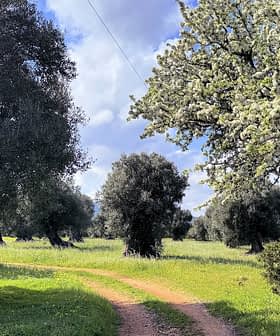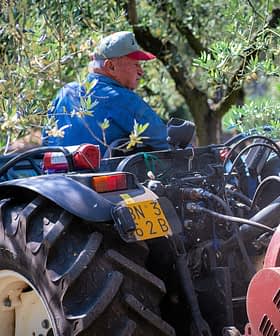
First drought, now blight. Widespread bacterial infection has already destroyed thousands of olive trees across Italy’s Puglia region, with numbers only forecast to rise sharply, adding to the economic effects of droughts in Spain and California.
The insect-borne bacterium xylella fastidiosa has infected trees across 74,000 acres in Puglia, which makes up Italy’s “heel” in the south. 11 million metric tons of olives are produced each year in the region, accounting for 1/3 of the national crop, making it Italy’s most important olive oil producing region.
Farmers have resorted to burning their trees — some of which are nearly 500 years old — in an attempt to stem the spread of infection. Many fear that olive oil prices in places like the United States, where Italian-produced oil has a 51 percent market share — will skyrocket in the wake of the crisis.
“Prices will rise by 30 to 40 percent because there will be fewer olives and therefore less oil produced,” Raffaele Piano, a Puglia olive farmer, told Agence France-Press.
The loss of trees alone has cost the region €250 million ($330 million). As the economic effects of the blight continue to spiral, officials have drafted plans to manage the disease’s spread.
“The disease is continuing to spread thanks to the summer temperatures and we have to take the right measures,” Angelo Corsetti, a spokesman for the national agricultural organization, Coldiretti. “There will be a genuine cordon sanitaire of 8,000 hectares where it will be obligatory to destroy the trees,” he said.
The mile-wide buffer zone will stretch from the Adriatic coast in the east to the Ionian coast in the west in an attempt to contain the blight, which causes trees to dry out stop bearing fruit. Inside the area, grass will be trimmed down and pesticides sprayed to control the insect population that carries the bacteria. 800,000 trees exist inside the area to be cordoned, with an estimated half infected at this point.
An emergency decree providing €3.5 million ($4.6 million) of funds and orders for farmers and officials to take action is set to come into place on August 27. Some criticize the delay in action, pointing to the fact that the crisis emerged while many Italians were on traditional month-long vacations during August.
“Xylella does not go on holiday,” said Gianni Cantele of Coldiretti, the national agricultural organization.








